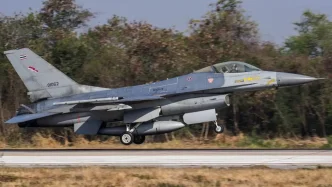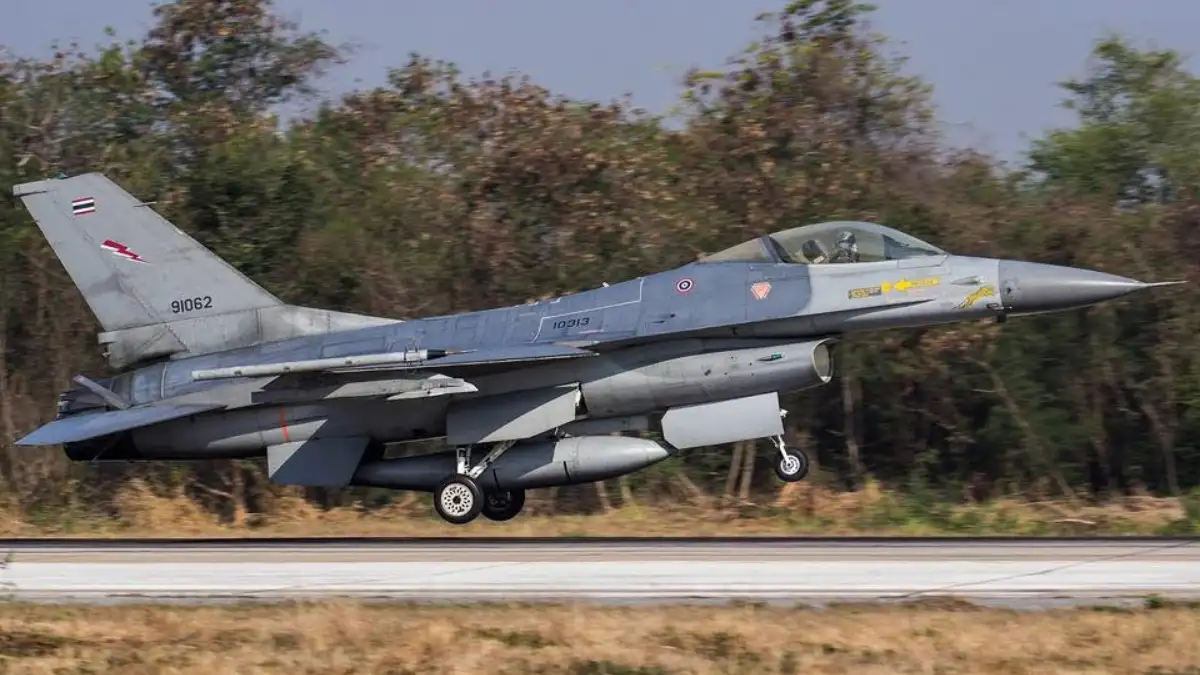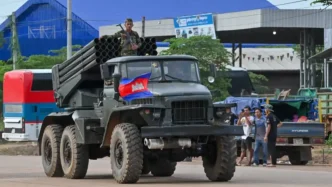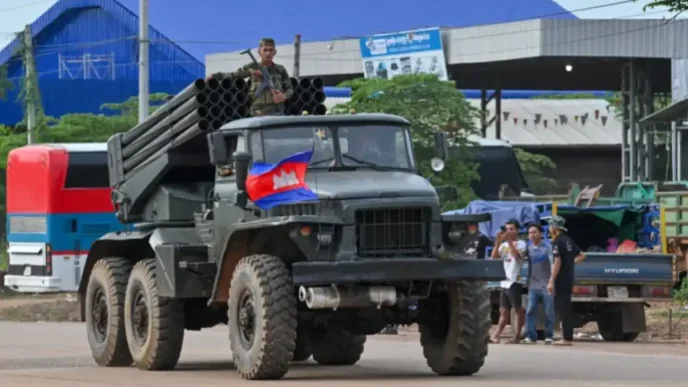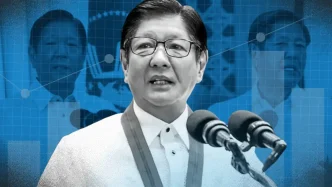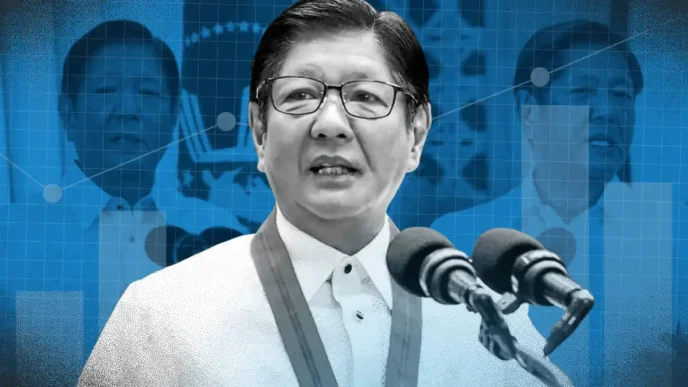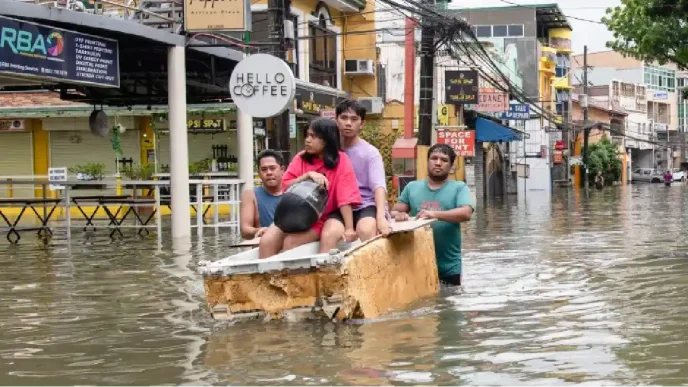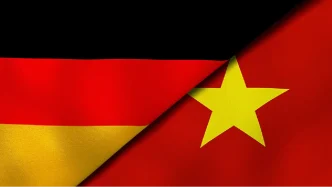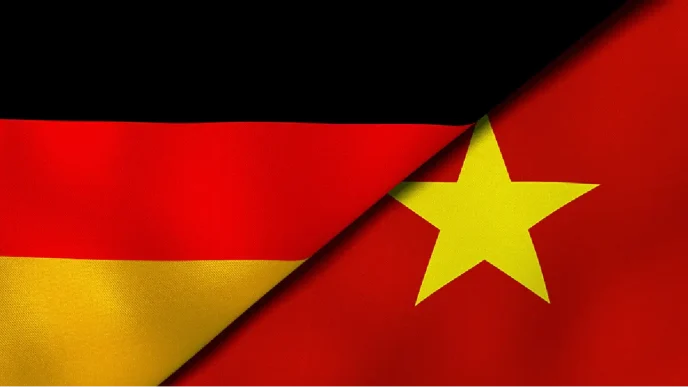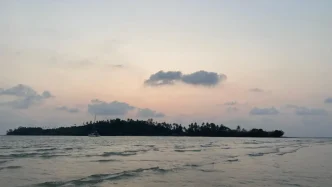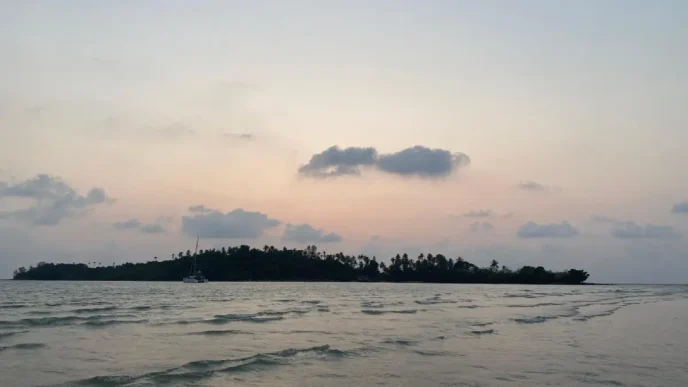A long-simmering border dispute between Thailand and Cambodia erupted into deadly violence on Thursday, 24 July 2025 as a Thai F-16 fighter jet bombed targets inside Cambodian territory, killing at least two civilians and intensifying a diplomatic crisis. The clash, centered around the disputed Ta Moan Thom temple along their shared eastern border, marks a dangerous escalation in a conflict that has plagued bilateral relations for over a century.
Air Strike and Ground Clashes
The Thai military confirmed that one of its six F-16 jets, deployed along the disputed 817 km (508 miles) border, carried out a strike on a military target inside Cambodia. The attack, described as a planned operation, destroyed its intended objective, according to Thai army deputy spokesperson Richa Suksuwanon, who told reporters, “We have used air power against military targets as planned.” In response, Thailand closed its border with Cambodia, further isolating the two nations amid rising tensions.
Cambodia’s defense ministry condemned the strike as a violation of its sovereignty, stating that two bombs were dropped on a road. The ministry issued a sharp rebuke, calling it a “reckless and brutal military aggression” against Cambodia’s territorial integrity. Cambodian forces reported responding in self-defense to what they described as an unprovoked incursion by Thai troops near the temple, located approximately 360 km from Bangkok.
On the ground, the skirmishes were devastating. Artillery fire from both sides struck civilian areas, with reports of shells landing on homes in Surin province, on the Thai side of the border. Sutthirot Charoenthanasak, district chief of Kabcheing in Surin, told reporters that two civilians had been killed in the violence. Authorities evacuated around 40,000 residents from 86 villages near the border to safer locations as gunfire and explosions echoed through the region. One local woman, speaking to Thai Public Broadcasting Service (TPBS) from a shelter fortified with sandbags and car tires, described the chaos: “How many rounds have been fired? It’s countless.”
Roots of the Conflict
The border between Thailand and Cambodia has been a flashpoint for over a century, with undemarcated sections fueling periodic clashes. The two nations have contested sovereignty over various points along their shared frontier, resulting in skirmishes that have claimed at least a dozen lives in recent decades, including a weeklong artillery exchange in 2011. The current crisis was reignited in May after the killing of a Cambodian soldier during a brief firefight, which spiraled into a full-blown diplomatic standoff.
Recent events have only deepened the rift. On Wednesday, Thailand recalled its ambassador to Cambodia and announced plans to expel Cambodia’s envoy from Bangkok. This followed reports of a second Thai soldier losing a limb to a landmine in the disputed area within a week, an incident Bangkok attributes to recently laid mines by Cambodian forces. Phnom Penh has denied the accusation, asserting that the soldiers strayed from agreed routes and triggered remnants of the millions of landmines left from Cambodia’s civil war decades ago. Thailand, however, insists that fresh mines have been placed in the area, a claim Cambodia dismisses as baseless.
The Thai military also accused Cambodia of deploying a surveillance drone and sending troops armed with heavy weapons, including rocket launchers, to the vicinity of Ta Moan Thom temple before the latest clash. Cambodian forces, in turn, reported that Thai troops initiated the violence, wounding two Thai soldiers in the ensuing firefight, according to a Thai army spokesperson.
Diplomatic Fallout and Domestic Turmoil
The situation has placed both governments under immense pressure. Thailand’s acting Prime Minister Phumtham Wechayachai urged caution, telling reporters, “We have to be careful. We will follow international law.” A recent attempt by Thai Prime Minister Paetongtarn Shinawatra to de-escalate tensions through a phone call with Cambodia’s influential former leader Hun Sen backfired when details of the conversation were leaked in an indignant and unstately manner. The incident sparked a political storm in Thailand, leading to Shinawatra’s suspension by a court amid calls for her resignation.
On the Cambodian side, Hun Sen, a towering figure in the country’s politics, has sought to project calm while defending his nation’s response. In a post on his official Facebook page on Thursday, under the account “Samdech Hun Sen of Cambodia” he described the Thai military’s actions as an invasion and confirmed that Cambodian forces were ordered to retaliate. He urged citizens to remain composed, avoid panic-buying essentials like rice, and continue their daily routines, except in border areas such as Oddar Meanchey where clashes persist. Hun Sen also claimed that two Cambodian provinces had come under shelling from Thai forces, though specific details on casualties or damage in those areas remain unverified.
Humanitarian and Regional Implications
The immediate human toll of the conflict is evident in the displacement of thousands of civilians on both sides of the border. In Thailand’s Surin province, families huddled in makeshift shelters as the violence unfolded, their lives disrupted by a conflict rooted in historical grievances. The evacuation of tens of thousands of villagers underscores the urgent need for humanitarian assistance and a swift resolution to prevent further civilian casualties.
Beyond the local impact, the escalation raises concerns for regional stability in Southeast Asia, a region already grappling with geopolitical tensions and internal conflicts. The Association of Southeast Asian Nations (ASEAN), of which both Thailand and Cambodia are members, has historically struggled to mediate disputes between its members due to its principle of non-interference. However, the severity of this clash—marked by the use of air power and heavy weaponry—may prompt renewed calls for ASEAN or other international actors to step in as facilitators for dialogue.
The historical context of the border dispute adds another layer of complexity. The Ta Moan Thom temple, like the more widely known Preah Vihear temple (the site of deadly clashes in 2011), holds cultural and national significance for both countries. Disputes over such sites are often intertwined with domestic political narratives, making compromise difficult. In Cambodia, defending territorial integrity is a rallying cry for leaders like Hun Sen, who have long positioned themselves as protectors of national pride. In Thailand, military actions and hardline stances on border issues can bolster support among nationalist factions, even as they risk international condemnation.
Landmines: A Lingering Threat
The issue of landmines remains a contentious point in the current crisis. Cambodia is one of the most heavily mined countries in the world, with millions of unexploded devices left over from decades of conflict, including the Khmer Rouge era and subsequent wars. De-mining organizations estimate that these remnants continue to pose a deadly risk to civilians and soldiers alike. Thailand’s accusation that new mines have been laid in the disputed area has heightened tensions, though Cambodia maintains that any injuries are the result of historical ordnance and unauthorized movements by Thai troops.
The landmine controversy exemplifies the broader challenges of trust and verification in this conflict. Without independent investigations or international oversight, both sides are likely to persist in their competing narratives, further entrenching mistrust. For soldiers patrolling the border and civilians living nearby, the threat of unexploded ordnance serves as a grim reminder of past wars, even as new battles unfold.
Looking Ahead
As artillery fire subsides and both nations assess the damage, the path to de-escalation remains uncertain. The use of an F-16 jet by Thailand—a rare deployment of air power in this longstanding dispute—signals a willingness to escalate military responses, while Cambodia’s retaliatory stance suggests that further clashes could erupt without immediate diplomatic intervention. The suspension of Thailand’s prime minister amid the leaked call controversy adds another layer of instability, potentially hampering Bangkok’s ability to negotiate from a unified position.
For the civilians caught in the crossfire, the stakes are immediate and personal. Their displacement and loss of life highlight the human cost of a conflict that, despite its deep historical roots, shows no sign of resolution. As both Thailand and Cambodia dig in, the question looms: can diplomacy prevail over the pull of nationalism and territorial pride, or will this border remain a fault line for violence in the years to come?

